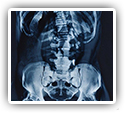Mood, Sleep, Digestion, and Emotions Improved in a Child Under Chiropractic

On June 28, 2024, the Asian-Pacific Chiropractic Journal published the results of a case study documenting the dramatic improvement of a young child under chiropractic care, who was previously suffering with mood issues, sleep problems, digestions, social interactions, and a variety of other developmental problems.
This study begins by explaining the importance of the Vagus nerve. The Vagus nerve is the 10th cranial nerve and is the longest. It may well be the most important of the 12 cranial nerves. This nerve is responsible for a large portion of the autonomic nerve system function which controls many internal organs. There has been much recent research concerning artificial stimulation of the Vagus nerve for medical treatment of conditions like depression and epilepsy. This type of treatment is invasive and carries risks.
Recent chiropractic research has shown that non-invasive chiropractic care has a positive effect on Vagus nerve function and has been linked to health benefits such as lower blood pressure. The authors of this study note that proper function, referred to as "tone", of the Vagus nerve is critical for an infant's emotional and social development as well as system functions such as digestion.
In this case, a 19-month-old infant boy was brought to the chiropractor by his mother because her son seemed to be constantly emotional and agitated. Initially, the boy's mother assumed her son was just going through a phase. However, as the problem continued, she also noted that her son never smiled and had issue with moody reactions, sleep problems, poor neck movement and position, difficulties with digestion and feeding, as well as some difficulties with crawling and walking. He also pointed out that her son's head shape was not asymmetrical.
The mother reported that from his very first day, the infant boy would wake up screaming. He would only be calm for a few hours during the day, but then would appear to be in pain as he constantly seemed agitated, with whining and crying.
An examination revealed a number of primitive reflexes that should only be present in the earliest weeks of life. This reinforced the presence of a nervous system issue. Subluxations were determined to be present, and a plan of specific and age-appropriate chiropractic adjustments were started.
Periodic re-assessments were performed several weeks into the boy's care. At that time, it was noted that the boy showed improvement in sleep quality, mood and general behavior, as well as a large improvement in his ability to deal with stress. Additionally, he showed improvement in his posture, coordination, body symmetry, balance, and he had a significant decrease in the amount of time he spent crying.
As care progressed, the boy continued to show improvement in all areas. At one point, his mother commented that she was "thrilled to have her son back." The boy's parents also said that because their son had received chiropractic care, their son seemed to be, "a completely different child."


